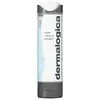What's inside
What's inside
 Key Ingredients
Key Ingredients

 Benefits
Benefits

 Concerns
Concerns

 Ingredients Side-by-side
Ingredients Side-by-side

Salicylic Acid 1%
MaskingKaolin
AbrasiveGlycerin
HumectantButylene Glycol
HumectantMagnesium Aluminum Silicate
AbsorbentGlyceryl Stearate
EmollientPEG-100 Stearate
Silica
AbrasiveSodium Lauroyl Sarcosinate
CleansingAllyl Methacrylates Crosspolymer
Emulsion StabilisingGentiana Lutea Root Extract
Skin ConditioningLaminaria Saccharina Extract
Skin ProtectingSucrose
HumectantAcetyl Glucosamine
Skin ConditioningCaprylyl Glycol
Emollient1,2-Hexanediol
Skin ConditioningTocopheryl Acetate
AntioxidantSodium Hydroxide
BufferingXanthan Gum
EmulsifyingDisodium EDTA
Phenoxyethanol
PreservativeCI 77891
Cosmetic ColorantCI 42090
Cosmetic ColorantCI 19140
Cosmetic ColorantSalicylic Acid 1%, Kaolin, Glycerin, Butylene Glycol, Magnesium Aluminum Silicate, Glyceryl Stearate, PEG-100 Stearate, Silica, Sodium Lauroyl Sarcosinate, Allyl Methacrylates Crosspolymer, Gentiana Lutea Root Extract, Laminaria Saccharina Extract, Sucrose, Acetyl Glucosamine, Caprylyl Glycol, 1,2-Hexanediol, Tocopheryl Acetate, Sodium Hydroxide, Xanthan Gum, Disodium EDTA, Phenoxyethanol, CI 77891, CI 42090, CI 19140
Water
Skin ConditioningGlycerin
HumectantBehenyl Alcohol
EmollientSorbitol
HumectantCaprylic/Capric Triglyceride
MaskingHydroxyethyl Urea
HumectantPropanediol
SolventCetyl Ethylhexanoate
EmollientCetyl Alcohol
EmollientGlyceryl Stearate
EmollientCarthamus Tinctorius Oleosomes
EmollientHydrolyzed Jojoba Esters
Skin ConditioningBetaine
HumectantBambusa Arundinacea Stem Extract
Skin ConditioningMelia Azadirachta Leaf Extract
Skin ConditioningMelia Azadirachta Flower Extract
Skin ConditioningCorallina Officinalis Extract
Skin ConditioningCucumis Sativus Fruit Extract
EmollientCoccinia Indica Fruit Extract
Skin ConditioningAcacia Decurrens Extract
AstringentRicinus Communis Seed Oil
MaskingAloe Barbadensis Flower Extract
EmollientSolanum Melongena Fruit Extract
Skin ConditioningAverrhoa Carambola Fruit Extract
Skin ConditioningNephelium Lappaceum Branch/Fruit/Leaf Extract
Skin ConditioningSaccharomyces/Xylinum/Black Tea Ferment
Skin ConditioningSpirulina Maxima Extract
SmoothingTremella Fuciformis Extract
HumectantViola Odorata Leaf Extract
MaskingCurcuma Longa Root Extract
MaskingOcimum Basilicum Flower/Leaf Extract
TonicOcimum Sanctum Leaf Extract
Skin ConditioningBacillus Ferment
Skin ConditioningSodium Hyaluronate
HumectantTriethyl Citrate
MaskingPEG-75 Stearate
Pentylene Glycol
Skin ConditioningXanthan Gum
EmulsifyingPhytosteryl Oleate
Skin Conditioning1,2-Hexanediol
Skin ConditioningCeteth-20
CleansingSteareth-20
CleansingC12-13 Pareth-3
EmulsifyingCaprylyl Glycol
EmollientTitanium Dioxide
Cosmetic ColorantLactic Acid
BufferingButylene Glycol
HumectantPhenylpropanol
MaskingEthylhexylglycerin
Skin ConditioningCalcium Alginate
MaskingJojoba Esters
EmollientAminomethyl Propanol
BufferingPolyquaternium-10
Citric Acid
BufferingDipotassium Glycyrrhizate
HumectantGluconic Acid
Biosaccharide Gum-4
Skin ConditioningPhytosterols
Skin ConditioningSodium Benzoate
MaskingXylitol
Humectant3-Hexenol
MaskingSodium Acetate
BufferingSodium Chloride
MaskingIsopropyl Alcohol
SolventCaprylhydroxamic Acid
Water, Glycerin, Behenyl Alcohol, Sorbitol, Caprylic/Capric Triglyceride, Hydroxyethyl Urea, Propanediol, Cetyl Ethylhexanoate, Cetyl Alcohol, Glyceryl Stearate, Carthamus Tinctorius Oleosomes, Hydrolyzed Jojoba Esters, Betaine, Bambusa Arundinacea Stem Extract, Melia Azadirachta Leaf Extract, Melia Azadirachta Flower Extract, Corallina Officinalis Extract, Cucumis Sativus Fruit Extract, Coccinia Indica Fruit Extract, Acacia Decurrens Extract, Ricinus Communis Seed Oil, Aloe Barbadensis Flower Extract, Solanum Melongena Fruit Extract, Averrhoa Carambola Fruit Extract, Nephelium Lappaceum Branch/Fruit/Leaf Extract, Saccharomyces/Xylinum/Black Tea Ferment, Spirulina Maxima Extract, Tremella Fuciformis Extract, Viola Odorata Leaf Extract, Curcuma Longa Root Extract, Ocimum Basilicum Flower/Leaf Extract, Ocimum Sanctum Leaf Extract, Bacillus Ferment, Sodium Hyaluronate, Triethyl Citrate, PEG-75 Stearate, Pentylene Glycol, Xanthan Gum, Phytosteryl Oleate, 1,2-Hexanediol, Ceteth-20, Steareth-20, C12-13 Pareth-3, Caprylyl Glycol, Titanium Dioxide, Lactic Acid, Butylene Glycol, Phenylpropanol, Ethylhexylglycerin, Calcium Alginate, Jojoba Esters, Aminomethyl Propanol, Polyquaternium-10, Citric Acid, Dipotassium Glycyrrhizate, Gluconic Acid, Biosaccharide Gum-4, Phytosterols, Sodium Benzoate, Xylitol, 3-Hexenol, Sodium Acetate, Sodium Chloride, Isopropyl Alcohol, Caprylhydroxamic Acid
Ingredients Explained
These ingredients are found in both products.
Ingredients higher up in an ingredient list are typically present in a larger amount.
1,2-Hexanediol is a synthetic liquid and another multi-functional powerhouse.
It is a:
- Humectant, drawing moisture into the skin
- Emollient, helping to soften skin
- Solvent, dispersing and stabilizing formulas
- Preservative booster, enhancing the antimicrobial activity of other preservatives
Butylene Glycol (or BG) is used within cosmetic products for a few different reasons:
Overall, Butylene Glycol is a safe and well-rounded ingredient that works well with other ingredients.
Though this ingredient works well with most skin types, some people with sensitive skin may experience a reaction such as allergic rashes, closed comedones, or itchiness.
Learn more about Butylene GlycolCaprylyl Glycol is a humectant and emollient, meaning it attracts and preserves moisture.
It is a common ingredient in many products, especially those designed to hydrate skin. The primary benefits are retaining moisture, skin softening, and promoting a healthy skin barrier.
Though Caprylyl Glycol is an alcohol derived from fatty acids, it is not the kind that can dry out skin.
This ingredient is also used as a preservative to extend the life of products. It has slight antimicrobial properties.
Learn more about Caprylyl GlycolGlycerin is already naturally found in your skin. It helps moisturize and protect your skin.
A study from 2016 found glycerin to be more effective as a humectant than AHAs and hyaluronic acid.
As a humectant, it helps the skin stay hydrated by pulling moisture to your skin. The low molecular weight of glycerin allows it to pull moisture into the deeper layers of your skin.
Hydrated skin improves your skin barrier; Your skin barrier helps protect against irritants and bacteria.
Glycerin has also been found to have antimicrobial and antiviral properties. Due to these properties, glycerin is often used in wound and burn treatments.
In cosmetics, glycerin is usually derived from plants such as soybean or palm. However, it can also be sourced from animals, such as tallow or animal fat.
This ingredient is organic, colorless, odorless, and non-toxic.
Glycerin is the name for this ingredient in American English. British English uses Glycerol/Glycerine.
Learn more about GlycerinGlyceryl Stearate is a mix of glycerin and stearic acid.
It is used to stabilize the mixing of water and oil ingredients. By preventing these ingredients from separating, it can help elongate shelf life. It can also help thicken the product's texture.
As an emollient, it helps soften skin and supports barrier-replenishing ingredients.
In cosmetics, Glyceryl Stearate is often made from vegetable oils or synthetically produced.
This ingredient may not be fungal-acne safe
Fun fact: The human body also creates Glyceryl Stearate naturally.
Learn more about Glyceryl StearateXanthan gum is used as a stabilizer and thickener within cosmetic products. It helps give products a sticky, thick feeling - preventing them from being too runny.
On the technical side of things, xanthan gum is a polysaccharide - a combination consisting of multiple sugar molecules bonded together.
Xanthan gum is a pretty common and great ingredient. It is a natural, non-toxic, non-irritating ingredient that is also commonly used in food products.
Learn more about Xanthan Gum